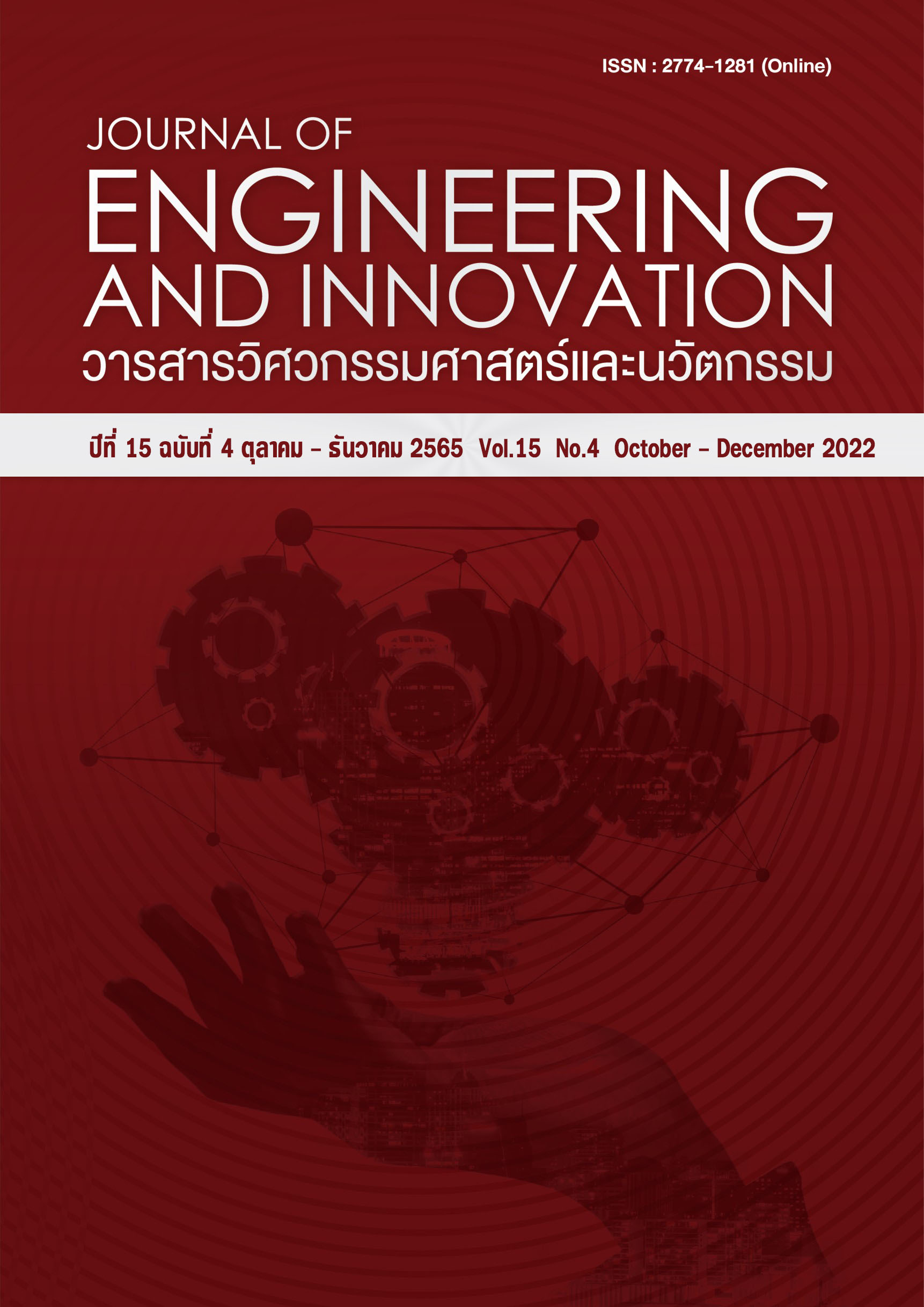Behaviour of composite contiguous pile wall and deep mixing column wall as a dam by numerical method
Main Article Content
Abstract
This research aims to study the parametric analysis on the behaviour of dam constructed by the composite contiguous pile wall and deep mixing column wall as a new alternative dam structure. The selected case study is the dam in Lake Legend Chaengwatthana project, Bangkok, Thailand. This dam was constructed in a deep rainwater pond without providing the water removal, which could save on both time and cost construction. In the parametric studies, there were the embedment depth of contiguous pile wall, the water level in a lake, the stiffness of soil-cement column wall and the depth of improvement by deep mixing method which were investigated on the stability of dam in term of the lateral displacement of dam and the bending moment on the contiguous pile wall by the finite element method using PLAXIS 2D. The studies can be concluded as: the increase of the embedment depth of contiguous pile wall, the stiffness of soil-cement column wall and the depth of improvement by deep mixing method reduce the lateral displacement of dam significantly. The increase in the different water level between both sides of dam can increase the lateral displacement but reduce the stability of dam significantly. The bending moment on the contiguous pile wall reduces with the decrease of the embedment depth and the different water level. Whereas the bending moment increase with the decrease of the soil-cement stiffness and the improvement depth. For all these study cases, it was confirmed that the maximum bending moment of outer wall was always higher than that of inner wall. The outcome of this research will be fundamental to develop a design guideline of soil-cement column wall by deep mixing method in soft Bangkok clay and other similar soft clay deposits especially in Southeast Asian countries.
Article Details
References
Alfaro MC, Balasubramaniam AS, Bergado D, Chai JC. Improvement techniques of soft ground in subsiding and lowland environment. CRC Press; 1994.
Broms BB, Boman P. Lime columns—A new foundation method. Journal of the Geotechnical Engineering Division. 1979 Apr;105(4):539-56.
Coastal Development Institute of Technology. The Deep Mixing Method – Principle, Design and Construction. A.A.Balkema Publishers, 2002. 123p.
Coastal Development Institute of Technology. The Premixing Method–Principle, Design and Construction. A.A.Balkema Publishers, 2003. 140p.
Coastal Development Institute of Technology. Technical Manual of Deep Mixing Method for Marine Works, 2008a. 289p. (in Japanese).
Coastal Development Institute of Technology. Technical Manual of Premixing Method, 2008b. 215p. (in Japanese).
Coastal Development Institute of Technology. Technical Manual of Light-weight Geomaterial, 2008c. 370p. (in Japanese).
Coastal Development Institute of Technology. Technical Manual of Pneumatic Flow Mixing Method, 2008d. 187p. (in Japanese).
The Building Center of Japan. Design and Quality Control Guideline of Improved Ground for Building, 1997. 473p. (in Japanese).
Fire and Disaster Management Agency. Criteria for a Specific Operation of Outdoor Storage Tank using Deep Mixing Method. Fire and Disaster Management Agency. 1995, No. 150, 2p. (in Japanese).
Yi Y, Liu S, Puppala AJ, Xi P. Vertical bearing capacity behaviour of single T-shaped soil–cement column in soft ground: laboratory modelling, field test, and calculation. Acta Geotechnica. 2017 Oct;12(5):1077-88.
Yi Y, Liu S, Puppala AJ, Jing F. Variable-diameter deep mixing column for multi-layered soft ground improvement: Laboratory modeling and field application. Soils and Foundations. 2019 Jun 1;59(3):633-43.
Pongsivasathit S, Petchgate W, Horpibulsuk S, Piyaphipat S. Composite contiguous pile wall and deep mixing column wall as a dam – Design, construction and performance. Case Studies in Construction Materials. 2021 Nov 9:e00771.
Topolnicki M. General overview and advances in Deep Soil Mixing. InXXIV geotechnical conference of torino design, construction and controls of soil improvement systems 2016 Feb 25 (pp. 1-30).
Japanese Society of Civil Engineer (JSCE). Manual for structure design of Japanese Railway, Tokyo; 1986.
Bowles, JE. Foundation analysis and design. 5th Edition. New York: McGraw- Hill. 1997.
Terzaghi, K. and Peck, RB. (1967) Soil Mechanics in Engineering Practice. John Wiley, New York. 729p.
Taylor DW. Fundamentals of soil mechanics. LWW; 1948 Aug 1.
Pongsivasathit S, Chai J, Ding W. Consolidation settlement of floating-column-improved soft clayey deposit. Proceedings of the Institution of Civil Engineers-Ground Improvement. 2013 Feb;166(1):44-58.
Kitazume M, Terashi M. The deep mixing method. Boca Raton, FL, USA:: CRC press; 2013 Feb 21.
Chai JC, Miura N, Kirekawa T, Hino T. Settlement prediction for soft ground improved by columns. Proceedings of the Institution of Civil Engineers-Ground Improvement. 2010 May;163(2):109-19.
Chai J, Pongsivasathit S. A method for predicting consolidation settlements of floating column improved clayey subsoil. Frontiers of Architecture and Civil engineering in China. 2010 Jun 1;4(2):241-51.
Pongsivasathit S, Voottipruex P, Chai JC. Settlement-time curve calculation of soil-cement column and slab improved soft clay deposit. Lowland Technology International. 2017 Mar 4;19(2, Sep):99-110.

